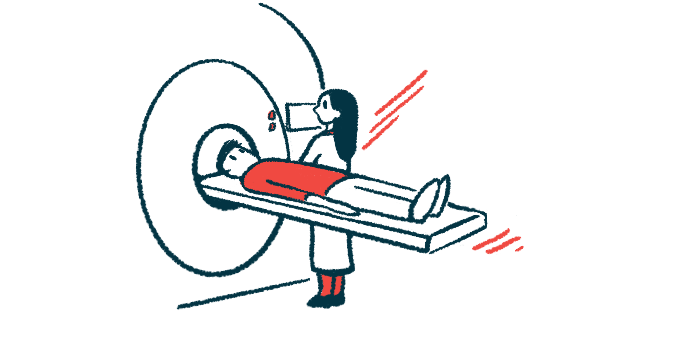Potentially safer MRI gadolinium-based contrast agent to enter testing
Phase 3 trials of gadoquatrane as MRI agent opening soon in adults, children
Written by |

Gadoquatrane, a gadolinium-based contrast agent (GBCA) that may be safer than current agents for people undergoing MRI scans, has entered a Phase 3 clinical testing program.
Quanti CNS (NCT05915702), one of the three global trials in Bayer‘s development program, will assess gadoquatrane against an approved GBCA during scans given to about 390 adults with disorders affecting the central nervous system (brain and spinal cord), including multiple sclerosis (MS). Patient enrollment is expected to begin this month.
Each study will test a gadolinium dose reported to be about 60% lower than that of other GBCAs, potentially avoiding safety concerns related to these contrast agents.
“The demand for innovation in medical imaging to support diagnosis of diseases, guide treatment decisions and aid in therapy planning is growing as we see an increase in chronic diseases,” Michael Forsting, MD, director of the Institute of Diagnostic and Interventional Radiology and Neuroradiology at University Essen in Germany, said in a company press release.
MRI contrast agents used in scans to diagnose, monitor MS
“The Phase III clinical program QUANTI is an important step in establishing the safety and efficacy of an investigational agent dosed at a substantially lower gadolinium dose,” Forsting added.
MRI scans are used to help diagnose MS and to monitor disease progression. A contrast agent containing gadolinium helps clinicians to visualize brain structures during the scan, particularly regions with active inflammation.
In rare cases, these agents can cause tissue scarring, and they also have been shown to accumulate in the brain of MS patients who frequently undergo MRI scans there, raising concern about toxicity and disease worsening.
Gadoquatrane, an investigational extracellular macrocyclic GBCA, has a different structure than other GBCAs. Its structure is believed to make the agent more stable and with a higher relaxivity — a measure of the sensitivity of the contrast agent — to allow for a lower gadolinium dose.
“An estimated 13 million contrast-enhanced MRI procedures are performed annually in the United States to help inform doctors’ decisions,” said Konstanze Diefenbach, MD, global head of radiology research & development at Bayer.
In addition to Quanti CNS, Quanti Pediatric (NCT05915026) will assess gadoquatrane’s safety and pharmacokinetics in about 100 children, ages 0-17, set to undergo a contrast-enhanced MRI in any part of the body for any reason. Pharmacokinetics is the study of how a drug moves into, through, and out of the body.
This worldwide pediatric study, expected to open in August at sites in North America, Argentina, Europe, and Asia, will evaluate gadoquatrane given at a single dose of 0.04 mmol gadolinium per kilogram of body weight (Gd/kg).
Adult trial in MRI scans of CNS expected to start enrolling worldwide this month
Quanti OBR (NCT05915728), also in up to 390 adults, will examine gadoquatrane’s use with MRI scans outside the CNS, such as those of the head and neck, thorax, abdomen, pelvis, and extremities. It, too, is expected to open in late July.
In both adult trials, participants will undergo two MRI scans, one after receiving an intravenous (into-the-vein) infusion of gadoquatrane at a dose of 0.04 Gd/kg, and another after use of an approved macrocyclic GBCA at a dose of 0.1 mmol Gd/kg. These scans will be compared with MRI scans taken without a contrast agent.
Quanti CNS, like its parallel OBR trial, expects to soon begin enrolling eligible adults at sites across the U.S., Canada, Argentina, Europe, and Asia.
In total, the program aims to test the potential contrast agent in more than 800 patients across 17 countries.






